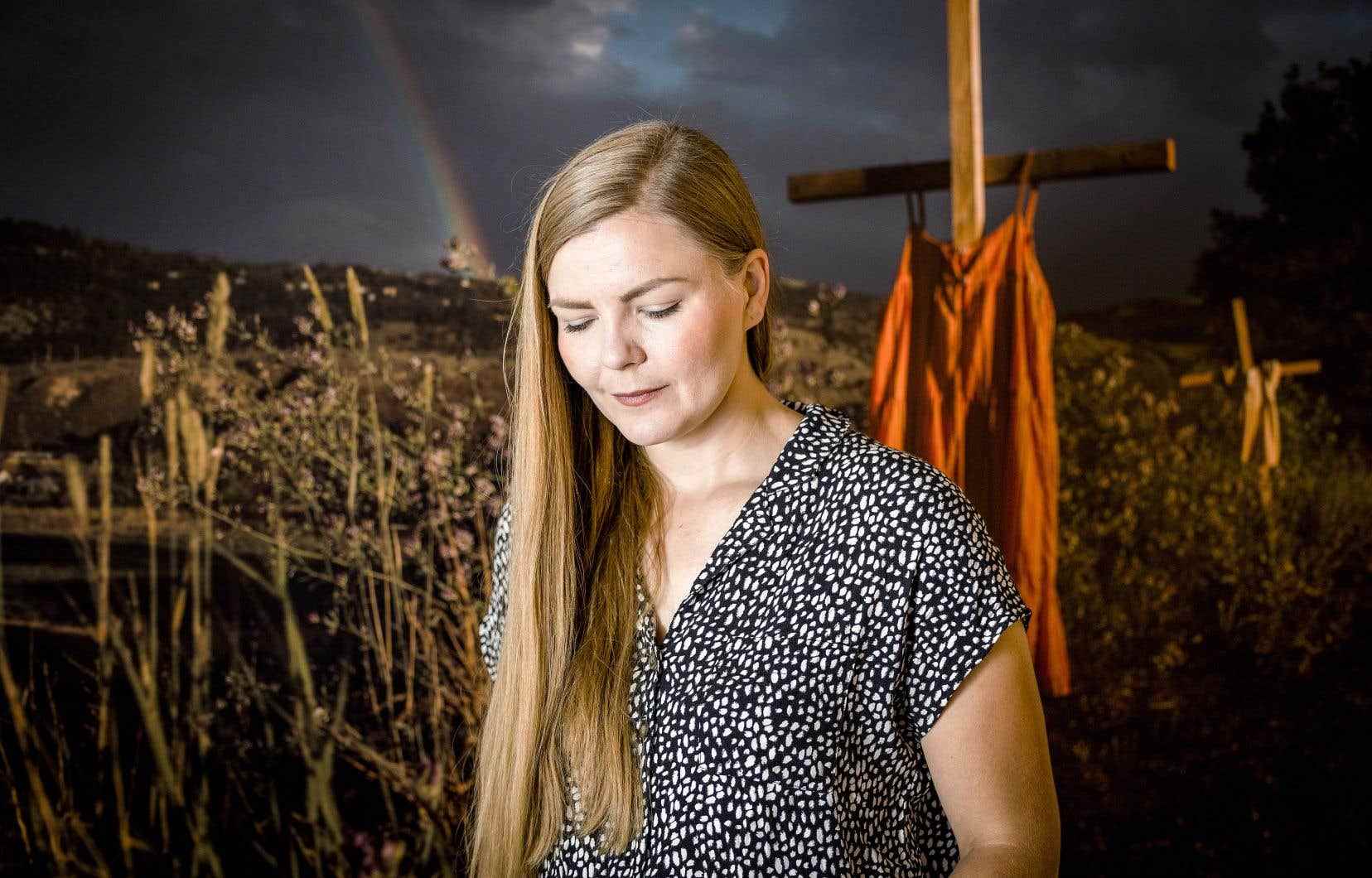On small wooden crosses the size of a child, orange clothes flutter in the wind. The year is 2021, on the outskirts of the former Kamloops Indian residential school, where traces of unmarked graves have been detected. The photo, which appeared in the New York Times, was taken by Alberta photographer Amber Bracken. It was chosen as photograph of the year by the jury of World Press Photo, which opens today at Bonsecours Market in Montreal after a two-year absence.
“It’s an installation that was designed by an Aboriginal woman from the Tk’emlúps te Secwe̓pemc community,” says Amber Bracken in an interview. At first, the team wanted to mount 215 crosses, but they stopped at 50. Their intention was to represent each of the children buried there. The crosses were along the road. We couldn’t miss them. It was very impressive to see all these crosses, the size of children. It was a tangible expression, while the graves have not yet been exhumed. »
“The artist who came up with the idea for this installation is a second-generation survivor. Her mother and grandmother attended this boarding school,” continues the photographer, who previously presented images to World Press Photo in 2017 on indigenous resistance to the presence of a pipeline on the Standing Rock reservation, in the United States. United States.
It was very impressive to see all these crosses, the size of children. It was a tangible expression, while the graves have not yet been exhumed.
“I started by trying to understand how contemporary issues affected the Aboriginal world,” adds the photographer, who says today that she wants to describe both the harms and the benefits of colonization.
For photographer Caroline Monnet, it was precisely the choice of this photo by the jury that made her agree to be spokesperson for the 15e edition of the World Press Photo.
“It’s like a pivot of our national and international news,” says Caroline Monnet, who also presents in the exhibition a series of portraits of indigenous women in futuristic outfits. “It was about time” that we talk about Canadian aboriginal issues, according to her.
Several of this year’s winning photographers also looked at the wildfires, which had already begun to devour the world in 2021. In Indonesia, the smog caused by the fires forced authorities to cancel flights and ask the population to stay at home. In Greece, Panayiota Kritsiopi, helpless, sees the fire approaching her house in the village of Gouves, in Euboea, the largest island in the country after Crete. It took almost two weeks to bring this gigantic fire under control. In the end, Panayiota Kritsiopi’s house was spared. Then, in the far northeast of Russia, in the republic of Sakha, or Yakutia, very serious forest fires contributed in 2021 to the melting of the permafrost.
Pitfalls of misinformation
On the sidelines of the main exhibition, the World Press Photo presents a reflection on disinformation, supported by disturbing statistics. Overall, nine out of ten Canadians admitted to having been fooled by misleading information gleaned from the Internet, according to an Ipsos poll. In the specific case of the COVID-19 pandemic, 96% of Canadians have read information about the subject on the Internet that they suspected to be misleading, false or inaccurate. Then 40% of Canadians said they believed information related to COVID-19 was true only to find that it was not.
On this subject, a photo report, awarded in the exhibition, is disturbing. In 2016, the city of Veles in North Macedonia was said to be the epicenter of fake news. Photographer Jonas Bendiksen publishes in 2021 The Book of Veles, a documentary project about the production of fake news in the city. Six months later, he reveals that this whole documentary project is fake. All the people depicted are actually 3D models generated by computers. The backgrounds are photos of empty places in Veles, converted back into 3D spaces. “The project challenges the ease with which false information can be produced, disseminated and taken seriously,” reads the text that accompanies the photos.
Endless confinement
For her part, the Argentine photographer Irina Werning followed the evolution of a young girl, Antonella, who bet not to have her hair cut during the whole time that the pandemic will last. She is seen sitting, studying on Zoom, her hair almost touching the ground. Antonella finally had her hair cut in November 2021, when she resumed classes at the Faculty of Engineering at the University of Buenos Aires, after missing 260 days of in-person classes.
